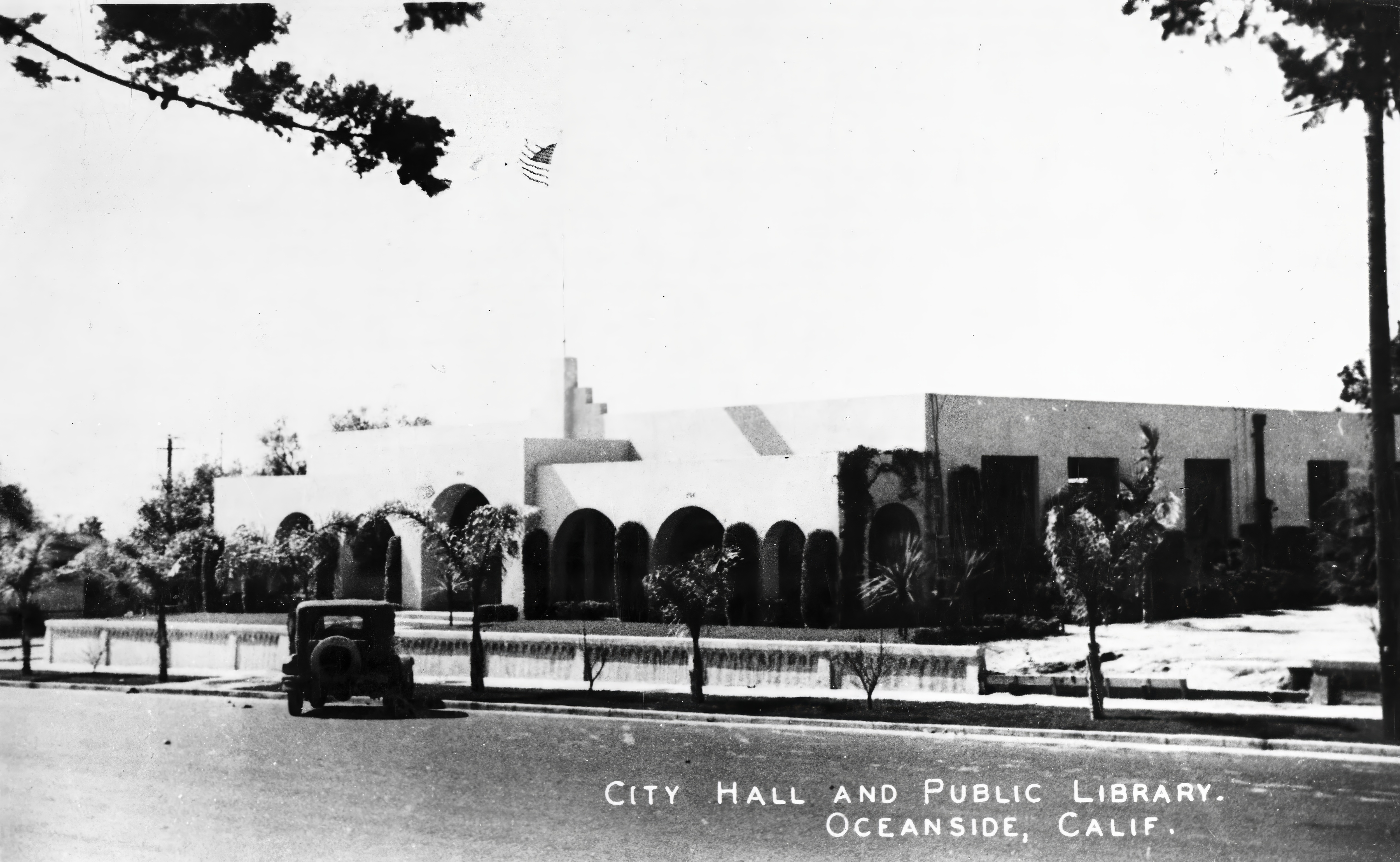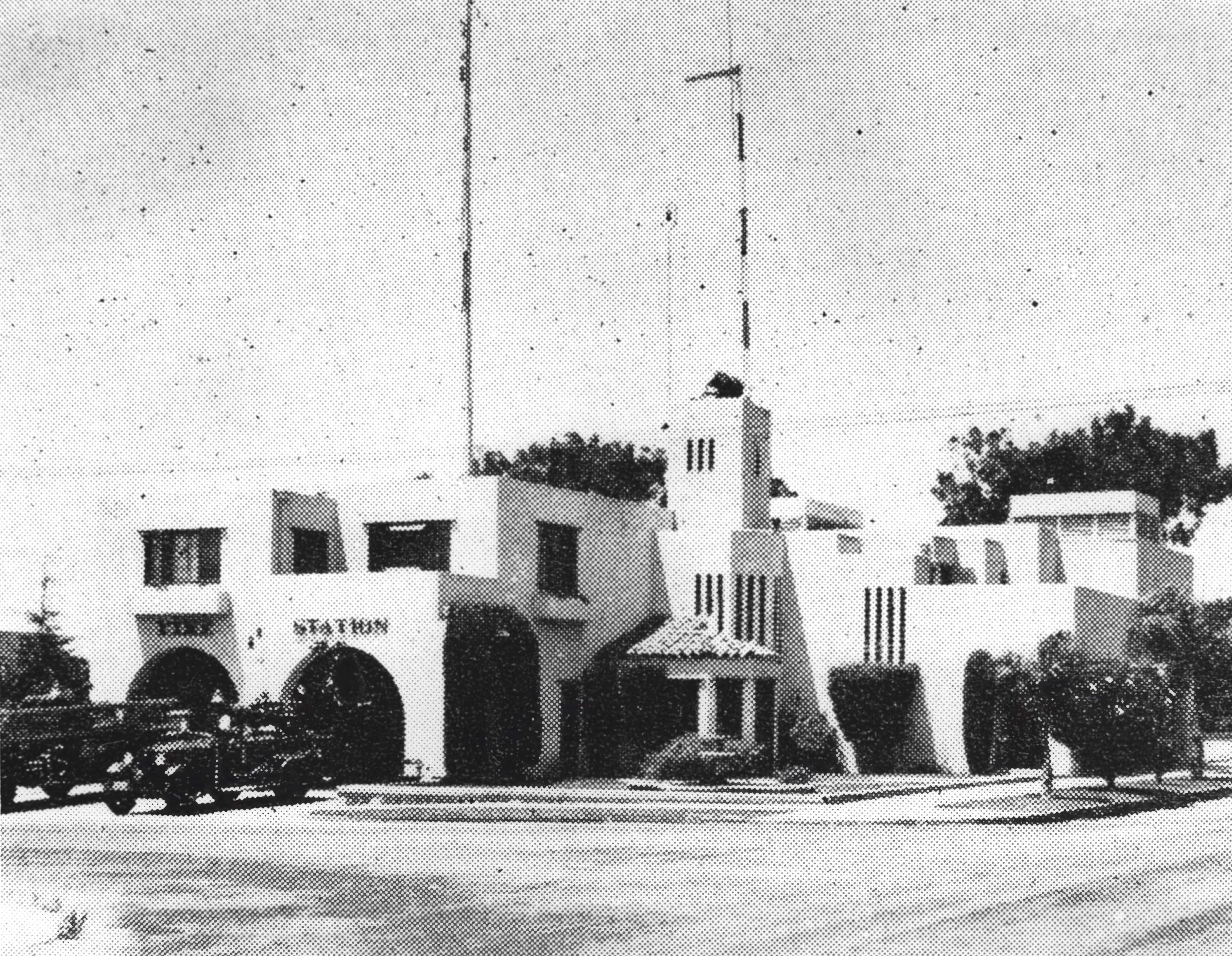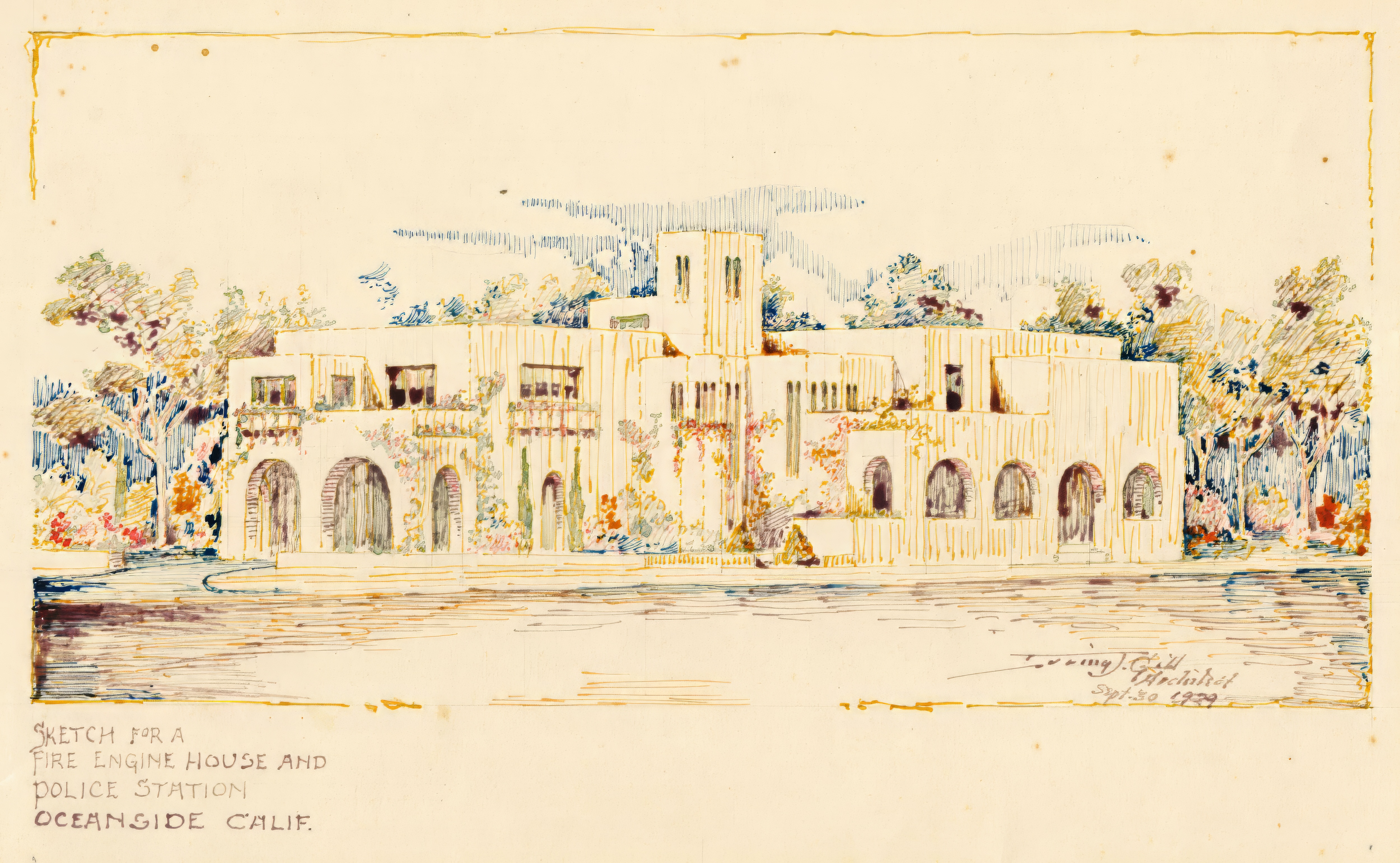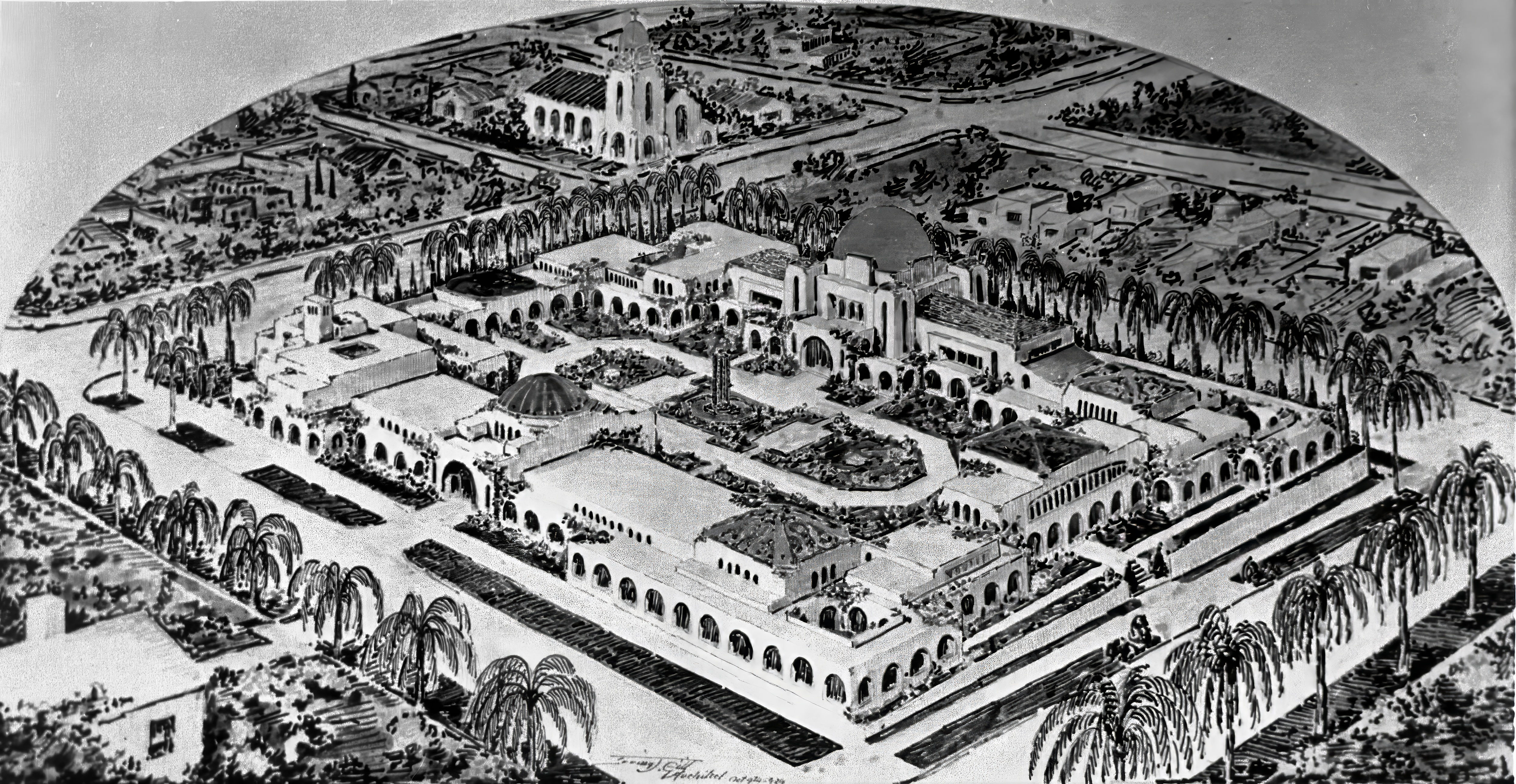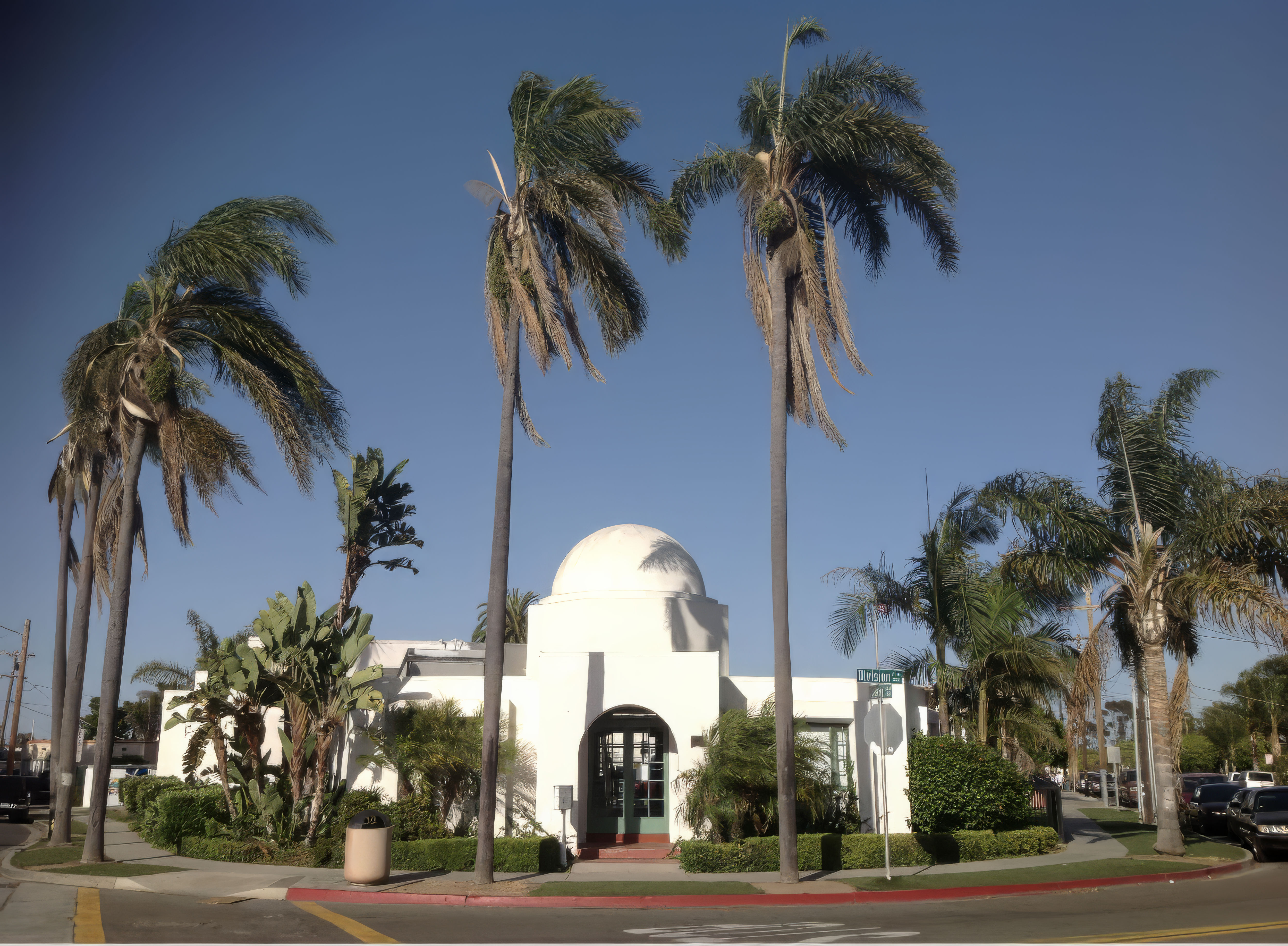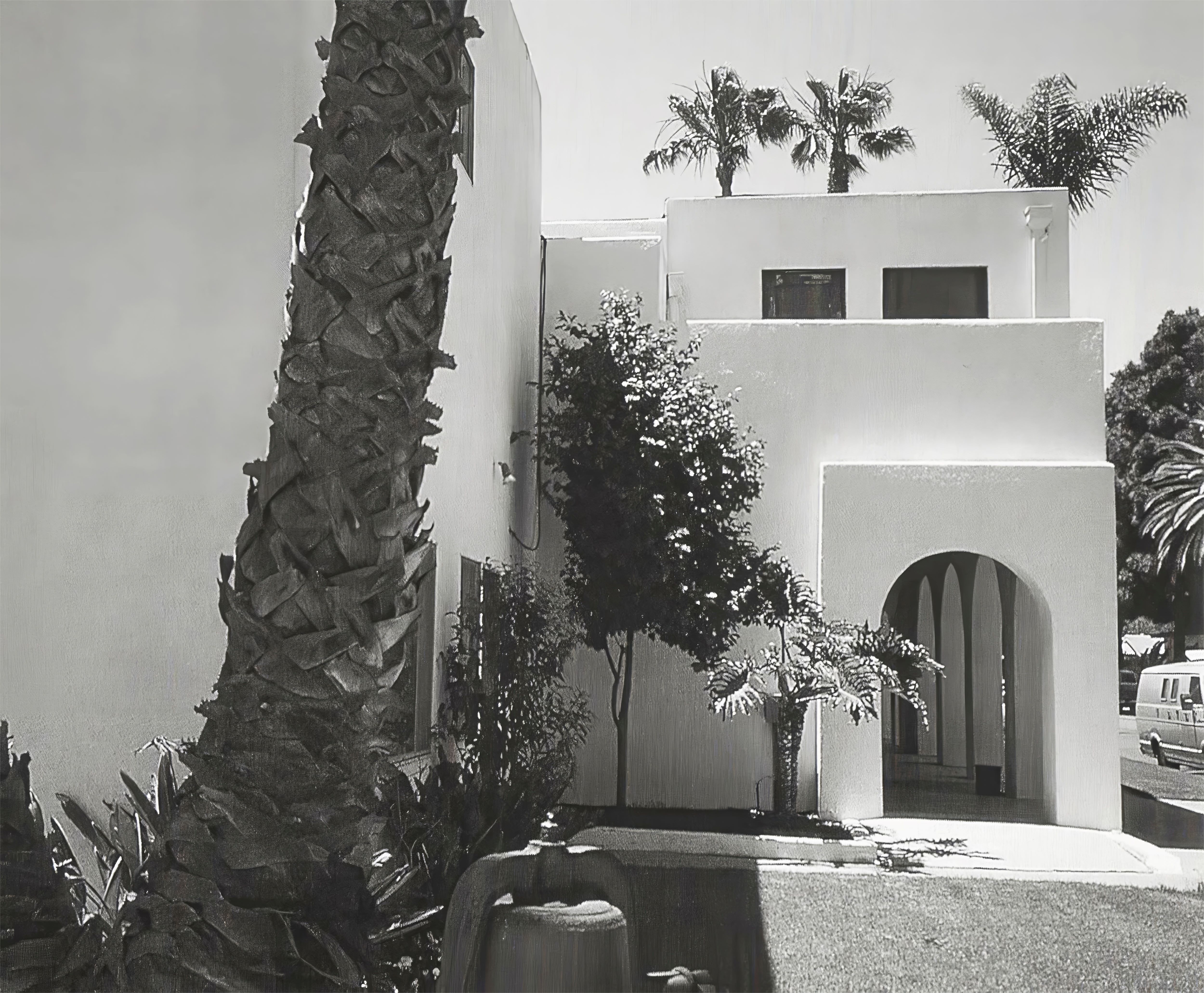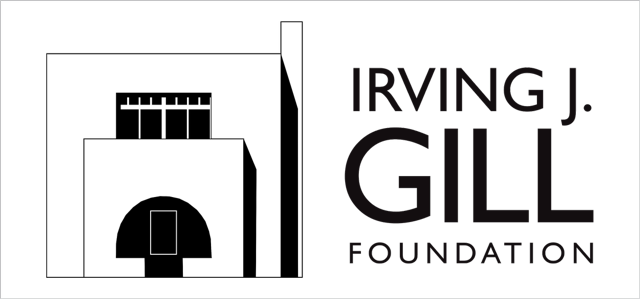
Modern simplicity: irving J. Gill in Oceanside
November 6, 2025–April 26, 2026
Modern Simplicity: The Architecture of Irving J. Gill in Oceanside celebrates the historical legacy of master architect Irving J. Gill, a visionary who played a pivotal role in shaping early modern architecture in Southern California. Known for his pioneering use of reinforced concrete, clean geometric forms, and a philosophy rooted in simplicity, Gill’s work continues to influence contemporary architectural design.
The City of Oceanside is home to several notable examples of Gill’s later work, including two landmark buildings that define the east-west axis of the Oceanside Museum of Art (OMA) campus: the former 1934 City Hall and the original Fire Station #1 and police station. These structures, completed during the final phase of Gill’s career, embody his signature approach—unadorned surfaces, functional elegance, and a seamless relationship between form and purpose.
The Museum will be expanding to include the historic Fire Station #1 in our campus, a transformation that honors the historical significance of the building while providing new opportunities for cultural engagement. As the centennial of these structures approaches, this project seeks to highlight Gill’s architectural contributions to Oceanside and the Southern California region, and position them within the broader context of early modernism internationally.
Gill’s work in Oceanside is not only a reflection of his architectural ideals but also a testament to his lasting impact on the built environment. By examining these buildings and their historical significance, this project provides a deeper understanding of Gill’s role in shaping modern architecture worldwide and explores how his innovative vision continues to resonate. Through an architecture exhibition, discussions, and scholarly engagement, this project underscores Gill’s enduring legacy and his influence beyond southern California.
This exhibition is organized by the Irving J. Gill Foundation
James B. Guthrie, President and Director
Heath Fox, Curator
Irving J. Gill, Architect, 1870-1936
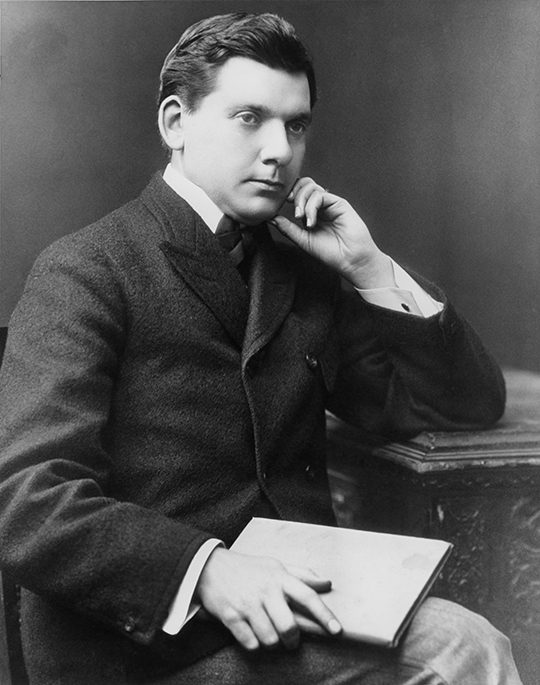
Irving J. Gill is noted for his pioneering and creative use of forms and aesthetics which places him at the dawn of the Modern Movement in architecture. While most other architects working in the beginning of the twentieth century were clinging to borrowed and fashionable styles, Gill pushed the technical and artistic boundaries of architecture. As a result, and during his lifetime, his notoriety would reach national and international stature.
Gill lead the way for other architects to follow. His unique formal vocabulary would become the basis of the architectural forms used later by architects of the de Stijl Movement, the Modern Movement and the International Style.
The bulk of his progressive work was built between 1907 and 1929. Unfortunately, the Depression greatly slowed construction of his designs. Then his death in 1936, at only 66, precluded a post-WWII career that would have provided an interesting period of growth and further fame, as it did for a number other modern architects who also got their start before the Depression.The seeds of his emergence as a modern architect came from his apprenticeships in Chicago for Joseph L. Silsbee and Adler & Sullivan (1890-1893). Along with working for these great architects, he worked side-by-side with a number of other young architects who would also rise to fame. His fellow Chicago apprentices included George G. Elmslie, George W. Maher, Frank L. Wright and others.
Moving to San Diego, California in 1893, Gill would go on to create a new architectural vocabulary that responded to Southern California’s climate and context in the same way that his Chicago associates would use the Midwest prairie for their inspiration. Gill, more than his Midwestern contemporaries, took to heart the teachings of Sullivan who said:
“It would be greatly for our aesthetic good if we should refrain entirely from the use of ornament for a period of years, in order that our thought might concentrate acutely upon the production of buildings well formed and comely in the nude.”
Gill embraced this lesson and designed his buildings in great detail and in pure form, stripping all unnecessary ornament from them to create an architectural opus of enduring strength and beauty.
Courtesy of the Irving J. Gill Foundation. Learn more at www.irvingjgill.org.
EXHIBITION CELEBRATION
Saturday, November 22, 2025, 5:00-7:00pm
Register Here (Members free, Visitors $15)




